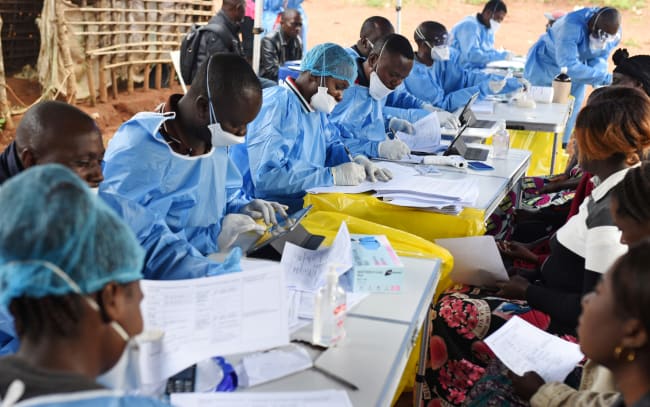Air pollution is the greatest environmental threat to human health, responsible for a staggering 1 in 9 deaths worldwide. Linked to cancer, heart disease, pneumonia, and other adverse health outcomes, it is the fourth leading cause of global mortality, claiming nearly 7 million lives each year. More than 90% of those deaths occur in low- and middle-income countries.
Despite the significant public health risk and economic implications, most low- and middle-income countries in Africa have not made air pollution a priority. According to a 2021 United Nations Environment Program report outlining the global state of air pollution legislation, only 17 of the 54 African countries have created ambient air quality standards despite growing PM2.5 levels.
Countries without legal standards often also have weak regulatory frameworks to govern pollution monitoring and control. Without reliable air quality monitoring data, governments do not have the information they need to develop data-driven policies and regulations. This perpetuates the cycle of inadequate pollution regulation, escalates public health risk, and exacerbates the economic impact of air-pollution related health-care and productivity costs.
Historically, household air pollution from solid fuel–burning appliances for heating and cooking and gas stoves has been the primary contributor of air pollution related deaths. Over the past 20 years, however, levels of outdoor air pollution and related diseases have risen. According to the Lancet Commission on pollution and health, which analyzed data from the 2019 Global Burden of Disease study, deaths attributable to outdoor, or ambient, air pollution increased by 55% between 2000 and 2019.
Deaths from Ambient Air Pollution Rise Globally
Although deaths from fuel-burning stoves and other household appliances have declined, outdoor air pollution is becoming more deadly
Fine particulate matter measuring less than 2.5 microns in diameter (PM2.5) poses the greatest health risk from ambient air pollution. These tiny particles, about 100 times smaller than a grain of table salt, can penetrate deep into the lungs and even enter the bloodstream. PM2.5 in the atmosphere originates from anthropogenic combustion sources including vehicle emissions, industrial processes, and residential heating, but can also come from natural events such as dust storms, wildfires, and sandstorms.
Air Quality in Africa
Rapid urbanization across the continent of Africa has fueled economic growth and heightened levels of PM2.5 pollution due to increased industrial activity, energy demands, and transportation. This surge in air pollution incurs significant economic costs, including substantial health-care expenses associated with pollution-related illnesses, loss of worker productivity due to health-related absenteeism or premature death, and long-term reduction in labor output due to the chronic exposure to poor-quality air.
A 2023 report by The Clean Air Fund, an international philanthropic organization dedicated to tackling air pollution and improving air quality around the world, estimates that the economic cost of uncontrolled urban development in six of Africa's expanding urban hubs—Accra (Ghana), Cairo (Egypt), Johannesburg (South Africa), Lagos (Nigeria), Nairobi (Kenya), and Yaounde (Cameroon)—could total nearly $140 billion by 2040.
Africa has consistently received the smallest share of philanthropic funding for air quality
Despite demonstrating what is arguably the greatest regional need, Africa has consistently received the smallest share of philanthropic funding for air quality. The Clean Air Fund reports that the continent received a meager 1% ($1.9 million) of the total air quality philanthropic funding between 2015 and 2022.
Globally, Africa also experiences the largest gaps in air quality monitoring data both in geography and reliability. The United States and Europe host dense urban monitoring networks, with approximately one government monitoring station per 500,000 people. In sub-Saharan Africa, that number drops to approximately one per 16 million.
According to data from IQAir, a Swiss air quality technology company, in 2023 real-time air quality data was available in only 36 of Africa's 54 countries. Of those 36, 13 hosted only one or two air quality monitoring stations across the entire country, and 18 nations had fewer than five monitoring stations.
A Call for Reliable Data
The cornerstone for informed decision-making and targeted interventions to protect public health from air pollution is reliable air quality data. Real-time air quality data plays a crucial role in protecting public health by raising awareness of air pollution, encouraging citizen engagement in environmental stewardship, and empowering local communities to make informed decisions, thereby building political support for stronger environmental protections and pollution reduction measures.
In 2008, the U.S. Embassy in Beijing began tweeting hourly PM2.5 levels monitored from instrumentation installed on its rooftop. The rise of social media-driven public awareness about air quality, fueled by particularly severe air pollution events referred to as "airpocalypses" in 2010 and 2011, contributed significantly to a growing outcry. This momentum, among other factors, eventually prompted the Chinese government to implement a National Air Quality Action Plan in 2013, allocating significant resources toward expanding air quality monitoring networks and strengthening air quality regulations and enforcement.
The mere presence of air quality monitoring stations is not enough to generate meaningful data, which is essential for informing and empowering residents to protect themselves against the impacts of air pollution. A closer examination of Africa's real-time data availability in 2023 reveals significant gaps. Among the 36 countries reporting real-time data, only 24 reported data for slightly more than half of the year. Additionally, among the countries with one or two monitoring stations, only one-third consistently produced data.
Data Gaps and Poor Air Quality in Africa
The African continent lacks reliable air quality data, but satellite estimates show that high PM2.5 levels persist

Data gaps often stem from resource constraints, including limited tools for maintenance and repair of monitoring equipment, instabilities in power delivery infrastructure, and unreliable networks for data transmission. The precarious state of underresourced air quality monitoring networks highlights the urgent need for sustained investment and support to ensure the consistent availability of meaningful data.
Satellite data can offer insights into air quality conditions in areas where ground-level monitoring is not available. Satellite-derived data from Washington University in St. Louis reveals that countries without robust air quality monitoring systems exhibit the highest estimated PM2.5 concentrations.
The financial and technical resources required to establish and maintain productive air quality monitoring networks can be substantial. Air pollution is a global problem and should be treated as such with equity in resource management and allocation. Failure to do so will only continue to perpetuate global environmental injustice and have a severe impact on air quality conditions around the world.













